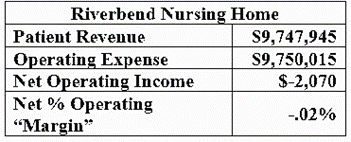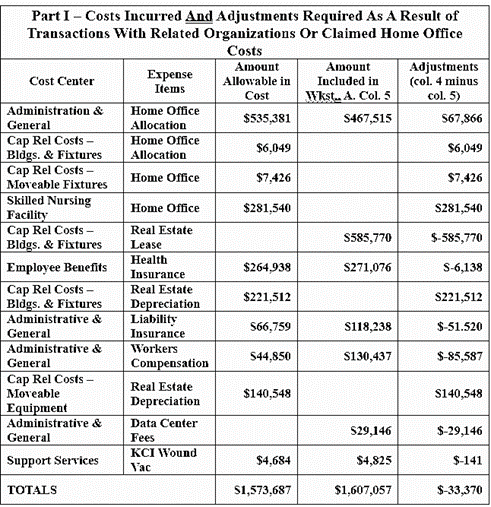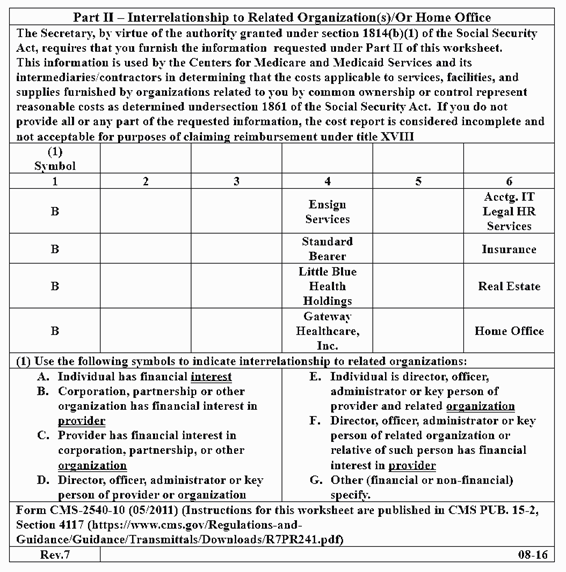By:
Dave Kingsley
Corporate Greed in the Post-Truth Age
Most Americans have never heard of the Better Medicare Alliance[1] – a Washington, D.C. think tank and front group for big health insurers such as UnitedHealth, Aetna, and Humana. Also, the 2023 Super Bowl TV audience didn’t know who paid for a commercial at halftime claiming that President Biden had plans to “cut Medicare.” The ad included a message urging viewers to call the White House and “tell President Biden not to cut Medicare,”[2] but they – the TV viewers – didn’t know who was asking them to do it. Football fans had to be perplexed. Medicare beneficiaries were most likely upset and worried by what they saw and heard.
The ad, funded by Better Medicare Alliance, was a lie. The truth is that President Biden had no intention and no plan to cut Medicare. Contrary to what the ad claimed, he was planning to claw back $4.7 billion from UnitedHealth and other insurers for defrauding the program through false billing practices. One illegal practice health insurers utilize to add unearned value to their Medicare Advantage (MA) reimbursement is called “upcoding.” Because sicker patients are reimbursed at a higher rate, the trick is to find ways to lie about how sick a patient is – to make them look sicker than they are.[3]
MA beneficiaries tend to be healthier than Traditional Medicare (TM) beneficiaries. Nevertheless, research indicates that when individuals move from TM to MA, their costs to the program increase. The important point is that “total Medicare payments to MA plans in 2024 (including rebates that finance extra benefits) are projected to be $83 billion higher than if MA enrollees were enrolled in FFS Medicare.” Furthermore, payments to MA plans average an estimated 122 percent of what Medicare would have expected to spend on MA enrollees if they were in FFS Medicare.”[4]
After the Biden Administration’s proposal to recoup stolen money from MA insurers and prevent further fraud, the health insurance industry threw a conniption fit and went into overdrive. The Super Bowl ad was only one tactic (costing eight figures, it was super expensive). In addition, they sent their army of lobbyists crawling all over the Washington, D.C. beltway threatening and bribing legislators. HHS backed down. The cheating continues and costs the seniors of America – indeed all wage earners – hundreds of billions from their payroll deductions, premiums, co-pays, and nearly $200 out of every Social Security check.
Pulling Back the Curtain on the Washington D.C. Policy Planning Network: What is the Better Medicare Alliance & Who is Behind It?
The insidious thing about think tanks set up inside the Washington, D.C. beltway is that they enlist the aid of seemingly legitimate advocates and scholars. It is hard to know if the advocates and scholars are merely naïve or whether they are self-serving. Perhaps unwitting would be a kinder word. For instance, the Better Medicare Alliance board consists of Dennis Borel, Executive Director of Texans with Disabilities, Caroline Coats, Humana, Inc., Daniel Dawes, Meharry Medical College, Mary Beth Dawes, Former Congresswoman (President & CEO), Joneigh Kaldhun, CVS Health, Dan Lowenstein, Visiting Nurse Service, NY, Richard Migliori, UnitedHealth, Elena Rios, National Hispanic Medical Association, and Kenneth Thorpe, Emory University.
The organizational structure of these industry front groups is a form of disinformation itself. On the board are big players in the MA industry – Humana, CVS, and UnitedHealth. Interspersed with the representatives of these health insurance behemoths are executives and professionals from organizations with an ostensible mission to improve society in some manner.
By placing their imprimatur on an industry lobbying group, NGOs, nonprofits with a stated humanitarian cause, and universities are participating in a duplicitous tactic to confuse the public about the real purpose of nefarious industry think tanks like Better Medicare Alliance. Their support for various entities with a mission to preserve and strengthen the medical-industrial complex helps divert funds needed for care into the coffers of executives and shareholders.
Privatizing Medicare was Supposed to Reduce Costs and Give Beneficiaries More Choice: It Hasn’t Worked Out that Way.
MA is a creature of the Medicare Modernization Act of 2003. The right-wing of American politics accomplished a coup by setting Medicare on the road to privatization. Currently over 50% of all beneficiaries have selected it over Traditional Medicare ™. Federal policy is unfortunately driving Seniors into MA by allowing manipulative practices such as low premiums and a few benefits not available to TA beneficiaries. Seniors are being led like lemmings into the arms of the insurance industry by disinformation and deceit. Organizations like the AARP in partnership with health insurers like UnitedHealth are the Pied Pipers.
MA is one of the most serious threats to the health and well-being of American seniors. It robs money from care and transfers it into the pockets of investors and executives. Many beneficiaries are happy with low premiums and add-ons not available under traditional Medicare such as Silver Sneakers plus some dental and vision care. I can understand why many people who have it are pleased with their coverage. It works for healthier beneficiaries until it doesn’t.
If MA beneficiaries should incur a costly service that is not in network, their assets could be wiped out. Some retirees have no choice in the matter. If their company or institution includes health insurance as a retirement benefit, it is most likely MA. Furthermore, I can’t blame anyone who is trying to avoid the premiums for supplemental coverage under traditional Medicare. Avoiding bankruptcy and depletion of assets through a catastrophic sickness makes perfect sense for TA beneficiaries. But the supplemental insurance is a heavy burden that could be avoided if the Medicare program weren’t diverting so much funding to MA (see discussion below).
Seniors and People with Disabilities Would not be Struggling as Much If Big Health Insurance were not Stealing from Them.
For seniors and disabled Americans to lose nearly $200 per month of their Social Security and choose between a large payout for supplemental or the risk of bankruptcy, is an injustice when privatized healthcare is stealing hundreds of billions of Americans’ tax dollars, payroll deductions, and hard-earned money through out-of-pocket expenses. The Physicians for a National Health Program (PNHP) has estimated that MA overcharged taxpayers by a minimum of 22% or $88 billion and potentially up to 35% for a total of $131 billion in 2022. If the high end of the estimate were correct, all of Part B premiums ($131 billion in 2022) or Part D premiums ($126 billion in 2022) could be covered by excessive corporate extraction of funds from Medicare.[5]
UnitedHealth is noting $25 billion in cash and cash equivalents on its 2023 balance sheet, CVS has noted $12 billion, and Humana is noting $5 billion. They have multiples of these amounts in long-term and short-term investments; they spend hundreds of billions on stock buybacks, dividends, and board and executive compensation. By digging into their assets, the cash rich health insurance business would be able to charge fair prices and stop their criminal behavior without much of a dent in a reasonable return on their investments.
In this Dark Age of Plutocracy, the Superrich & Corporations are Lying and Blaming Government & Ordinary Americans for Poor Healthcare and Excess Expenditures
Americans earning wages and salaries are being subjected to a corporate network of disinformation and gaslighting. President Biden is blamed for cutting Medicare when he is in fact attempting to protect the program. The growing elderly population is blamed for federal debt and deficits when Medicare and Social Security have little impact on the federal budget (SS has none and over half of MC is paid through payroll deductions, premiums, and co-pays). The nursing home industry blames taxpayers for failing to provide them with enough money to adequately care for the elderly and disabled patients in their beds while they spin a false hardship narrative.
The Medical-Industrial Complex has established a network of front groups with a duplicitous message of doing good for Americans and has enlisted the aid of do-gooder nonprofits, universities, and individuals. This system and its apparatchiks aren’t all that clever. Their organizational tactics are rather easy to discern. The problem is that it is happening stealthily behind the scenes in Washington, D.C. and the 50 state capitals. The media is ignoring it. We intend to expose it and encourage everyone we can to join us in that endeavor.
[1] https://bettermedicarealliance.org/
[2] You can see the ad here: https://www.ispot.tv/ad/2UHG/better-medicare-alliance-cutting-medicare-thats-nuts.
[3] Reed Abelson & Margot Sanger-Katz (2023), “Biden Plan to Cut Billions in Medicaid Fraud Ignites Lobbying Frenzy,” https://w.w.w.nytimes.com/2023/03/22/health/medicare-insurance-fraud.html?searchResultPosition=1.
[4] Medicare Payment Advisory Commission (MDPAC), 2024, p. March 2024 Report to the Congress: Medicare Payment Policy – MedPAC
[5] Physicians for a National Health Program, (2023), Our Payments their Profits: Quantifying Overpayments in the Medicare Advantage Program. MA Overpayment Report (pnhp.org)



